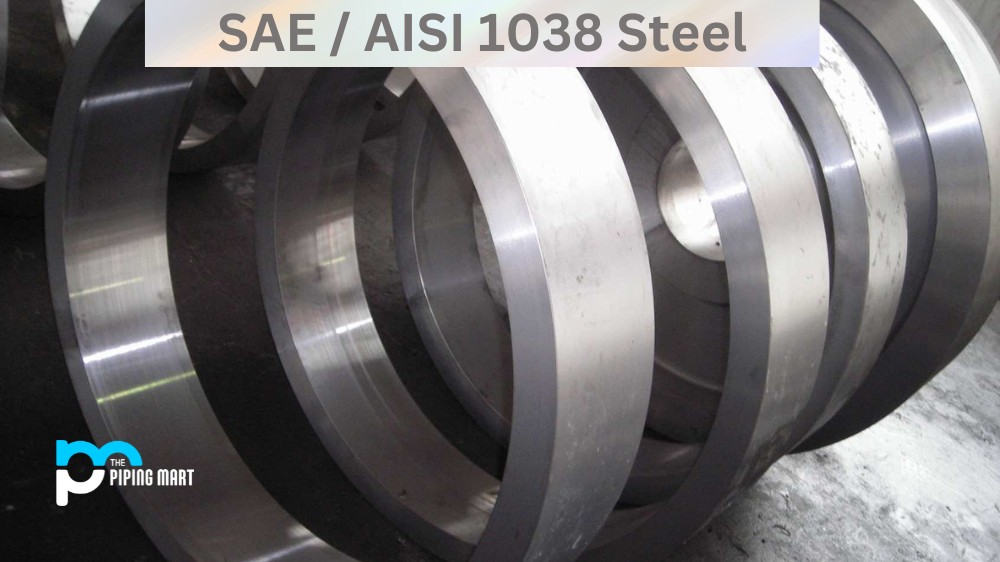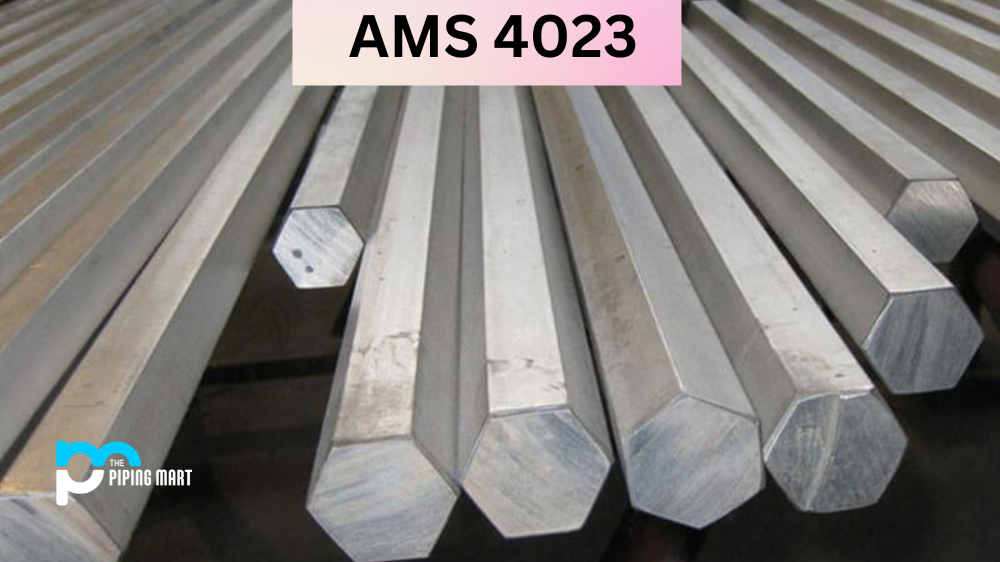SAE/AISI 1038 steel is a carbon steel that is commonly used in construction and manufacturing. This steel has a good combination of strength and ductility, making it an ideal choice for a variety of applications. In this blog post, we will take a closer look at the composition, mechanical properties, physical properties, uses, and corrosion resistance of SAE / AISI 1038 steel.
SAE/AISI 1038 Composition
AISI 1038 steel is composed of carbon, manganese, silicon, phosphorus, sulfur, and copper. The percentages of these elements in the steel are listed in the following table.
| Element | Content (%) |
|---|---|
| Iron, Fe | 98.59-99.09 |
| Manganese, Mn | 0.60-0.90 |
| Carbon, C | 0.340-0.420 |
| Sulfur, S | ≤ 0.050 |
| Phosphorous, P | ≤ 0.040 |
SAE/AISI 1038 Mechanical Properties
The following table lists the mechanical properties of UNS G10380.
| Properties | Metric | Imperial |
|---|---|---|
| Tensile strength, ultimate | 570 MPa | 82700 psi |
| Tensile strength, yield | 485 MPa | 70300 psi |
| Modulus of elasticity | 190-210 GPa | 29700-30458 ksi |
| Bulk modulus (typical for steel) | 140 GPa | 20300 ksi |
| Shear modulus (typical for steel) | 80.0 GPa | 11600 ksi |
| Poissons ratio | 0.27-0.30 | 0.27-0.30 |
| Elongation at break (in 50 mm) | 12% | 12% |
| Reduction of area | 35% | 35% |
| Hardness, Brinell | 163 | 163 |
| Hardness, Knoop (converted from Brinell hardness) | 184 | 184 |
| Hardness, Rockwell B (converted from Brinell hardness) | 84 | 84 |
| Hardness, Vickers (converted from Brinell hardness) | 170 | 170 |
| Machinability (based on AISI 1212 steel. as 100 machinability) | 65 | 65 |
SAE/AISI 1038 Physical Properties
The physical properties of UNS G10380 steel are listed in the following table.
| Properties | Metric | Imperial |
|---|---|---|
| Density | 7.845 g/cm3 | 0.2834 lb/in³ |
SAE/AISI 1038 Thermal Properties
| Thermal Properties | Metric | Imperial |
|---|---|---|
| Thermal conductivity | 51.9 W/mK | 360 BTU in/hr.ft².°F |
SAE/AISI 1038 Equivalent
- ASTM A29
- ASTM A510
- ASTM A544
- ASTM A545
- ASTM A546
- ASTM A576
- ASTM A839
- SAE J1397
- SAE J403
- SAE J412
- SAE J414
- AFNOR XC 38 TS
- DIN 1.1176
SAE/AIS 1038 Uses
SAE 1038 steel is commonly used in construction and manufacturing applications. Some specific examples include:
- Structural components such as beams and columns
- Machinery parts such as gears and shafts
- Fasteners such as bolts and screws
- Pipe fittings and flanges
Corrosion Resistance
Grade 1038 steel has good corrosion resistance thanks to the presence of copper in the composition. This element forms a protective oxide layer on the surface of the steel, which helps to protect it from corrosion.
Heat Resistance
Alloy 1038 steel has good heat resistance thanks to its high carbon content. This allows the steel to maintain its strength at high temperatures.
Heat Treatment
Heat treatment is an important process for this type of steel. It helps to improve the ductility and hardness of the material. Quenching and tempering are the most common heat treatment process for this type of steel. Quenching involves heating the material to above its critical temperature and then cooling it rapidly in water or oil. This process helps to harden the material. Tempering involves reheating the material below its critical temperature and cooling it slowly in the air. This process helps improve the material’s ductility without making it too brittle.
Machining
SAE / AISI 1038 can be machined using all standard machining methods. However, due to its high carbon content, this material tends to work hard quickly during machining. This means that cutting tools will dull more quickly when machining this material. It is important to use sharp tools and take light cuts when machining this material.
Conclusion
SAE / AISI 1038 is a carbon steel that is commonly used in construction and manufacturing applications thanks to its good combination of strength and ductility. This material has good corrosion resistance and heat resistance thanks to its composition. It can be machined using all standard methods, but care must be taken to avoid tool wear due to its work-hardening tendencies during machining operations.

Abhishek is a seasoned blogger and industry expert, sharing his insights and knowledge on various topics. With his research, Abhishek offers valuable insights and tips for professionals and enthusiasts. Follow him for expert advice on the latest trends and developments in the metal industry.




